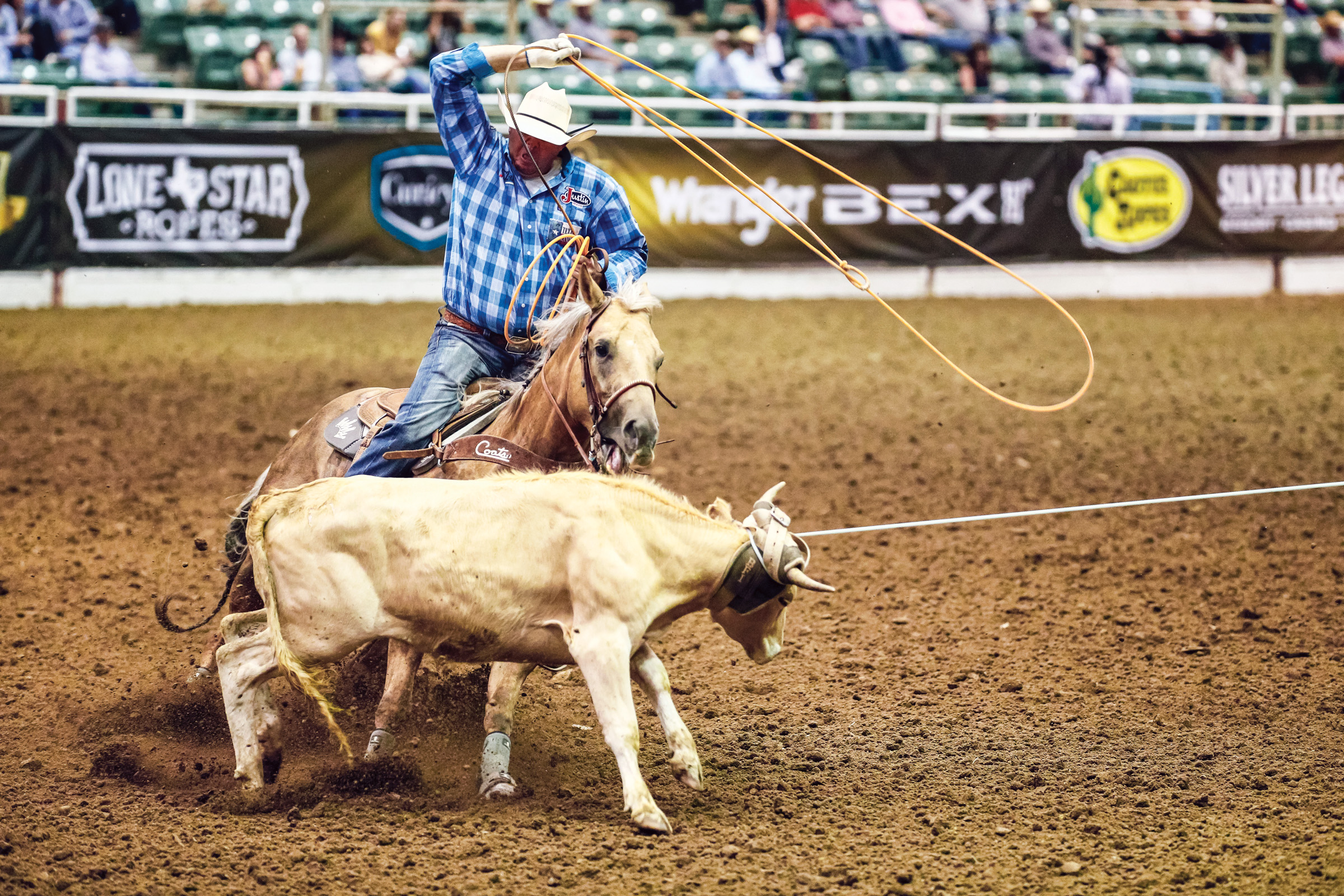Unless you only go to ropings a few miles from your house, it’s a sure bet you’ll be away from home this summer with your horses. Remember that time your horse tweaked a shoe and you wished you had a pair of pullers? Or the time he acted colicky and you didn’t have any Banamine? What about the time he went dead lame and you needed to know how to hurry that abscess along?
Vet Kit Basics
Cotton
Gauze
Back On Track Wraps
Farrier Tools
Epsom Salts
Vetrap
Furazone
Anti-Bacterial Eye Ointment
Broad-Spectrum Antibiotic
Bute
Banamine
Betadine Scrub
Kolik Eaz
Jailbreak
It’s called a vet kit, and it could save you and your rope horse a large amount of stress on the road. Lifelong team roper Doug Funk, DVM, mulled over some basics for us on vet-kit essentials.
“You need bandage materials for sure,” he said. “Materials to make sweats and coolant and track wraps—you could fill the back of a pickup with the variety of bandage materials out there. But it boils down to a roll of cotton, vet wrap, and furazone.”
As far as wounds go, he points out that it’s smart to stick to water-soluble ointments like furazone in case a veterinarian might need to suture the wound.
“Try to stay away from Blu-Kote and scarlet oil on fresh wounds because they make it impossible to suture,” said Dr. Funk. “You want to apply something to the wound that a vet can rinse out if necessary.”
What are the other must-haves? Anti-bacterial eye ointment, which you can probably get from your vet, and a broad-spectrum antibiotic. The easiest to carry without refrigerating is SMZ.
“It’s also good to have Bute paste or powder, unless you’re real handy with injections,” said Dr. Funk. “Injectable Bute has to be IV and that’s not for everybody.”
There are a couple of other anti-inflammatory pharmaceuticals beneficial to have on hand—as long as you have a relationship with your veterinarian and that person has talked to you about how and when to use them. Banamine is handy for both lameness and colic, and dexamethasone can help take care of allergic reactions and certain respiratory ailments. While these are good to have in a pinch, they shouldn’t be administered unless you’re educated on how to use them.
That said, if you’re near a rodeo when something happens with your horse, just find a barrel racer. Serious can chasers who do it for a living are most likely to be able to give a horse a shot in the vein and most likely to know how to help your horse until you locate a vet.
In fact, four-time world champion Sherry Cervi has been on the road a time or two with horses, so we asked her what kinds of things are in the vet kit packed by her husband, 15-time NFR heeler Cory Petska.
“Cory doesn’t worry about having supplies in their trailer, because they know that I have everything!” she said, laughing.
Still, she gave us a good idea what any team roper should pack. Cervi carries gauze and Betadine scrub for wounds and, like Dr. Funk, is a fan of that old stand-by, furazone. She uses furazone on wounds and mixes it with various other ointments to sweat swelling out of a leg. To get a sweat going, you need the cotton and polo wraps mentioned by Dr. Funk, and it’s never a bad idea to have an expert (a barrel racer) do the actual wrapping.
Want to make it simple? Cervi says just buy some machine-washable Back On Track wraps. The company’s Royal Quick Wraps and Therapeutic No Bow Raps are supposed to reduce swelling with no need for liniment or ointment.
However, for a suspected abscess, Cervi says it’s always good to have poultice materials. Epsom salts for soaking and ichthammol salve will start drawing out the infection right away, so the abscess can break and heal.
“I carry diapers, too, so it’s easy to just put one of those on to keep your salve in place or keep the hoof clean if an abscess has already broken,” said Cervi.
What about bellyaches in your horse? Cervi suggests your kit contain injectable Banamine because you can usually find someone who knows how to give it IV. Or, it doesn’t hurt to carry Banamine paste if you’re in the middle of nowhere.
“Knock on wood, I’ve also had good luck administering Silver Lining’s Kolik Eaz—it comes in a powder or already in the paste,” she said. “Oxy-Gen also makes a product called Jailbreak with probiotics and electrolytes, and I’ve given both together.”
Finally, although Cervi is no farrier, she carries basically all the tools to be one.
“You can almost always run across a horseshoer anywhere you go, but so often they’ll tell you they don’t have their tools,” she said. “I’ve got them.”
There you have it—the vet-kit basics from a bonafide road warrior and a cowboy expert. TRJ









